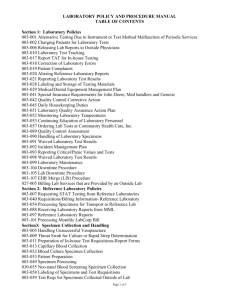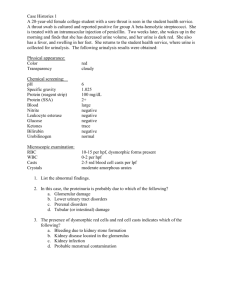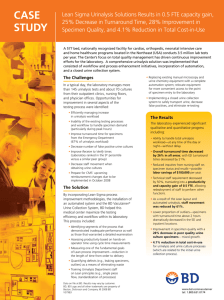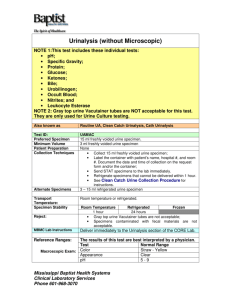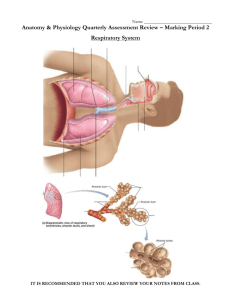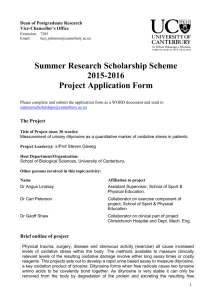University of Virginia Health System
advertisement
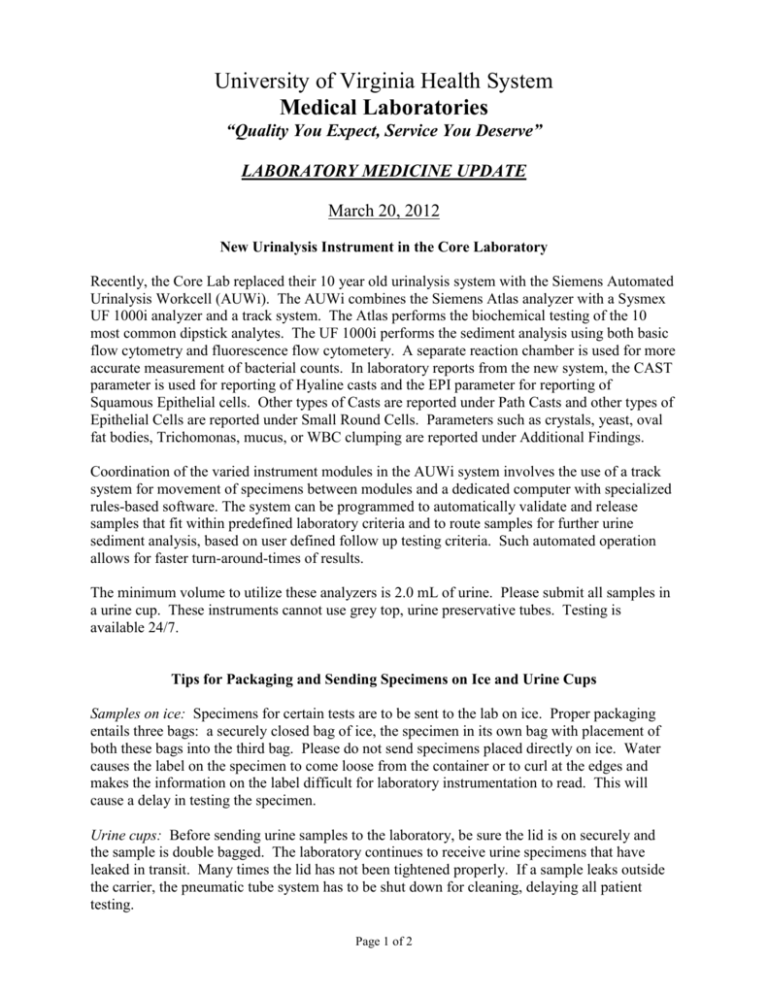
University of Virginia Health System Medical Laboratories “Quality You Expect, Service You Deserve” LABORATORY MEDICINE UPDATE March 20, 2012 New Urinalysis Instrument in the Core Laboratory Recently, the Core Lab replaced their 10 year old urinalysis system with the Siemens Automated Urinalysis Workcell (AUWi). The AUWi combines the Siemens Atlas analyzer with a Sysmex UF 1000i analyzer and a track system. The Atlas performs the biochemical testing of the 10 most common dipstick analytes. The UF 1000i performs the sediment analysis using both basic flow cytometry and fluorescence flow cytometery. A separate reaction chamber is used for more accurate measurement of bacterial counts. In laboratory reports from the new system, the CAST parameter is used for reporting of Hyaline casts and the EPI parameter for reporting of Squamous Epithelial cells. Other types of Casts are reported under Path Casts and other types of Epithelial Cells are reported under Small Round Cells. Parameters such as crystals, yeast, oval fat bodies, Trichomonas, mucus, or WBC clumping are reported under Additional Findings. Coordination of the varied instrument modules in the AUWi system involves the use of a track system for movement of specimens between modules and a dedicated computer with specialized rules-based software. The system can be programmed to automatically validate and release samples that fit within predefined laboratory criteria and to route samples for further urine sediment analysis, based on user defined follow up testing criteria. Such automated operation allows for faster turn-around-times of results. The minimum volume to utilize these analyzers is 2.0 mL of urine. Please submit all samples in a urine cup. These instruments cannot use grey top, urine preservative tubes. Testing is available 24/7. Tips for Packaging and Sending Specimens on Ice and Urine Cups Samples on ice: Specimens for certain tests are to be sent to the lab on ice. Proper packaging entails three bags: a securely closed bag of ice, the specimen in its own bag with placement of both these bags into the third bag. Please do not send specimens placed directly on ice. Water causes the label on the specimen to come loose from the container or to curl at the edges and makes the information on the label difficult for laboratory instrumentation to read. This will cause a delay in testing the specimen. Urine cups: Before sending urine samples to the laboratory, be sure the lid is on securely and the sample is double bagged. The laboratory continues to receive urine specimens that have leaked in transit. Many times the lid has not been tightened properly. If a sample leaks outside the carrier, the pneumatic tube system has to be shut down for cleaning, delaying all patient testing. Page 1 of 2 Change in CA 19.9 Assay In a consolidation effort, Medical Labs has moved the CA 19.9 assay to a new instrument and vendor. Results by the new assay are twice as high as the results of the old assay, on average, but larger or smaller differences are seen in individual patients. Such differences between assays cannot be eliminated by a correction factor; they reflect recognition of different epitopes by the antibodies in the old and new reagents. The reference range for the new assay is < 37 U/mL. To “rebaseline” a patient, please contact the laboratory at 4-LABS (924-5227) at the time you order the test. The laboratory will perform and report results of both assays on the same sample. The patient will be billed for only one test. Please contact the Chemistry Director on-call at pic 1657 or the Chemistry resident at pic 1267 if you have any further questions. Page 2 of 2
